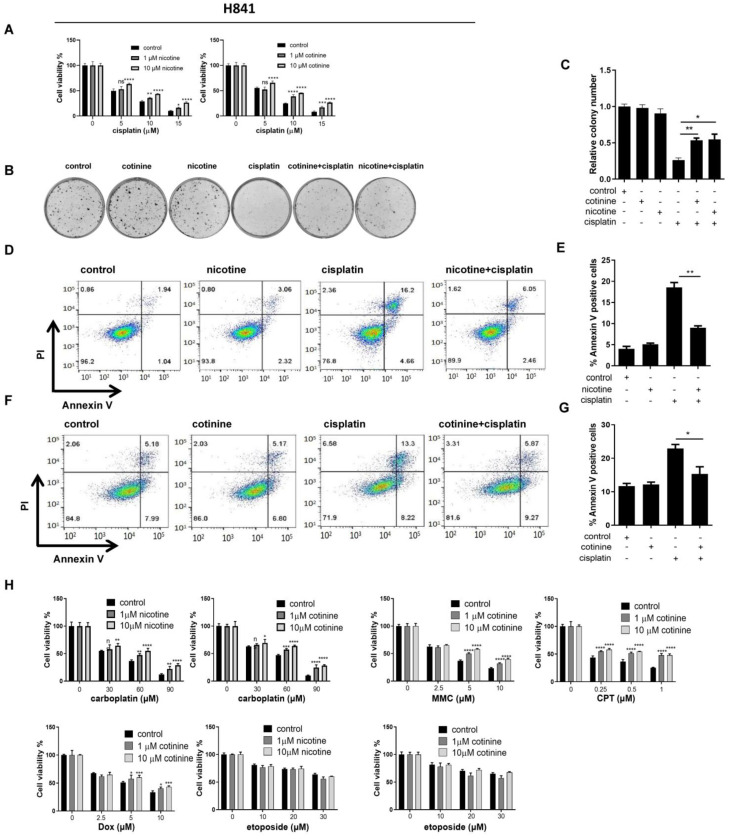Figure 2.
The effects of nicotine and cotinine exposure on the cytotoxicity induced by major SCLC chemotherapies in H841 cells. (A) Cell titer blue assay showing that nicotine and cotinine exposure significantly reduce cisplatin-induced SCLC cell cytotoxicity. H841 cells were treated with cisplatin alone, or together with nicotine or cotinine, and cell viability was measured by cell titer blue analysis. (B,C) Colony formation analysis suggesting that nicotine or cotinine exposure markedly block cisplatin-induced SCLC cell proliferation inhibition. H841 cells were treated with cisplatin alone, or together with 10 µM nicotine or 10 µM cotinine, and colony formation analysis was conducted. (D–G) Annexin V staining analysis suggesting that nicotine or cotinine exposure significantly suppress cisplatin-induced SCLC cell apoptosis. H841 cells were treated with cisplatin alone, or together with nicotine (D) or cotinine (F), and cell apoptosis analysis was performed. (H), Cell titer blue assay showing that nicotine or cotinine exposure significantly reduce carboplatin, MMC and CPT-induced SCLC cell death, while the effect is weak on Dox and there are no effects on etoposide. H841 cells were treated with DNA damage-inducing reagents, carboplatin, MMC, CPT, Dox and etoposide, alone or together with cotinine, and cell viability analysis was performed. Statistically significant differences determined using t test (E,G) or one-way ANOVA (H). *, p < 0.05; **, p < 0.01; ***, p < 0.001 and ****, p < 0.0001.

